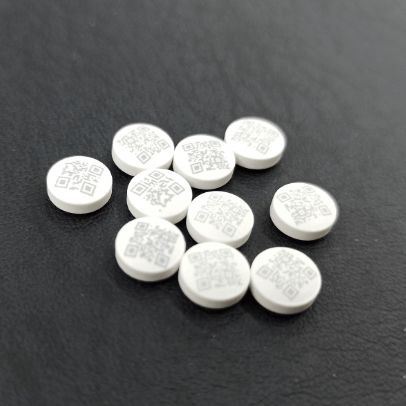About Laser Technology
As mentioned before, there are three main printing methods for tablets and capsules: offset, inkjet and laser.
This article will answer your questions about UV laser printing, a relatively new printing method among the various printing methods.
What is a laser?
A laser is a device that emits light through a process of optical amplification based on the stimulated emission of electromagnetic radiation. The term “laser” originated as an acronym for “light amplification by stimulated emission of radiation”
ー Types and operating principles
Gas Lasers: e.g. CO2 Laser, Argon-ion Laser
Solid-state lasers: e.g. YAG Laser, YVO4 Laser, (UV Laser)

Mechanism of laser transmission
UV lasers (solid state lasers) are produced by YVO and laser diodes (LDs).
This makes them more efficient than conventional lamps.
The YVO produces a 1064 nm laser beam by converting it to a specific laser beam from the LD.
The Q-switch acts as a high-speed shutter that produces short pulses.
When the 1064 nm laser beam passes through the SHG, it changes to 532 nm.
When the 532 nm laser beam passes through the THG, a 355 nm laser beam (= UV laser beam) is emitted.
In this system, the energy is amplified as it moves back and forth between the mirrors.
Of course, the device needs to be cooled with cold water.
UV laser printing
The UV laser beam generated by the UV laser oscillator passes through mirrors and lenses to print on the object.
Mirrors: Control the UV laser beam in the direction of the object.
Lens: Focus the UV laser beam on the object.
Advantages of UV Laser Printing
Printing is performed by irradiating the tablets with a UV laser.
This printing method offers both freedom of design and a significant reduction in running costs.
